
|
It brightened up to -3 mag due to the forward scattering on Oct. 9 in the SOHO coronagraph images (Q.-c. Zhang, Charles S. Morris). It became a great comet of 0 mag on the ground. Now it is 9.3 mag (Dec. 8, Yoshimi Nagai). Fading rapidly. In the Northern Hemisphere, it will be unobservable in January. But it will be observable again in January. In the Southern Hemisphere, it is not observable now, but it will appear in March.
Date(TT) R.A. (2000) Decl. Delta r Elong. m1 Best Time(A, h)
Dec. 7 19 15.39 4 44.1 2.129 1.574 43 9.1 18:18 ( 77, 26)
Dec. 14 19 23.51 5 5.6 2.316 1.690 40 9.5 18:20 ( 81, 22)
|

|
Now it is 10.8 mag (Dec. 8, Carlos Labordena). It will fade out rapidly after this. It will be fainter than 18 mag in March. In the Northern Hemisphere, it will be getting lower gradually. But it will be getting higher again after December. In the Southern Hemisphere, it will never be observable after this.
Date(TT) R.A. (2000) Decl. Delta r Elong. m1 Best Time(A, h)
Dec. 7 13 42.01 56 33.7 0.547 1.118 88 9.6 5:24 (222, 52)
Dec. 14 17 17.93 66 24.7 0.565 1.132 89 9.9 5:29 (208, 31)
|

|
It approaches to Sun down to 0.09 a.u. on Jan. 13. According to the calculation, it will brighten up to -1 mag. But probably, it will be disintegrated. At the high light, it may be observable after the perihelion passage only in the Southern Hemisphere. Now it is 9.7 mag (Dec. 3, Martin Masek). It brightens up to -1 mag, but it will turn to fade out rapidly after that. In the Northern Hemisphere, it will never be observable after this. In the Southern Hemisphere, it will be unobservable soon.
Date(TT) R.A. (2000) Decl. Delta r Elong. m1 Best Time(A, h)
Dec. 7 16 8.64 -39 42.3 2.023 1.145 19 11.1 5:24 (306,-18)
Dec. 14 16 27.70 -38 7.7 1.860 0.988 19 10.3 5:29 (306,-15)
|

|
It returned for the first time in 68 years. It brightened up to 6.2 mag in early summer (July 1, Virgilio Gonano). Now it is 10.1 mag (Nov. 10, Mike Olason). Fading gradually. Now it is not observable. It will appear in January.
Date(TT) R.A. (2000) Decl. Delta r Elong. m1 Best Time(A, h)
Dec. 7 16 49.20 -12 25.2 3.462 2.499 10 11.7 5:24 (277,-11)
Dec. 14 17 0.31 -13 25.7 3.530 2.573 11 12.0 5:29 (281, -8)
|
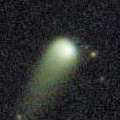
|
Now it is 12.7 mag (Dec. 8, Osamu Miyazaki). Fading slowly. In the Northern Hemisphere, it stays observable in good condition. In the Southern Hemisphere, it is not observable now.
Date(TT) R.A. (2000) Decl. Delta r Elong. m1 Best Time(A, h)
Dec. 7 4 11.65 68 23.3 2.993 3.743 133 12.6 23:03 (180, 57)
Dec. 14 3 31.32 67 38.8 3.023 3.756 132 12.7 21:56 (180, 57)
|

|
Now it is 13.4 mag (Oct. 31, Thomas Lehmann). Fading slowly. It will be unobservable soon in the Southern Hemisphere, or in January in the Northern Hemisphere. But it will be observable again in March.
Date(TT) R.A. (2000) Decl. Delta r Elong. m1 Best Time(A, h)
Dec. 7 19 26.81 -18 58.3 3.110 2.379 35 13.2 18:18 ( 56, 12)
Dec. 14 19 39.07 -17 3.0 3.167 2.388 31 13.3 18:20 ( 60, 11)
|

|
It returns for the first time in 70 years. It brightened up to 3.7 mag in early April (Apr. 6, Jose Guilherme Aguiar). Now it is 14.6 mag (Oct. 22, Hidetaka Sato). Fading slowly. In the Northern Hemisphere, it is not observable now, but it will appear in February. In the Southern Hemisphere, it will be getting higher gradually.
Date(TT) R.A. (2000) Decl. Delta r Elong. m1 Best Time(A, h)
Dec. 7 15 57.19 -47 50.2 4.243 3.402 27 13.4 5:24 (315,-21)
Dec. 14 16 7.63 -47 56.1 4.303 3.478 29 13.6 5:29 (317,-18)
|

|
Now it is 13.9 mag (Nov. 30, L. Hudin). It will fade out rapidly after this. In the Northern Hemisphere, it stays observable in good condition. In the Southern Hemisphere, it will be getting lower gradually after this, and it will be unobservable in January.
Date(TT) R.A. (2000) Decl. Delta r Elong. m1 Best Time(A, h)
Dec. 7 4 59.73 13 45.9 0.737 1.717 171 13.7 23:50 ( 0, 70)
Dec. 14 4 27.41 22 18.3 0.758 1.731 166 13.8 22:51 ( 0, 78)
|
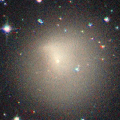
|
Major outburst occured between Nov. 1 and 2. Another outburst occured in late November. Now it is 11.4 mag (Dec. 8, Seiichi Yoshida). It stays observable in good condition.
Date(TT) R.A. (2000) Decl. Delta r Elong. m1 Best Time(A, h)
Dec. 7 10 12.70 9 7.3 5.949 6.248 103 13.8 5:09 ( 0, 64)
Dec. 14 10 12.92 8 59.1 5.841 6.250 110 13.8 4:42 ( 0, 64)
|

|
Now it is 15.1 mag (Dec. 1, ATLAS South Africa). It stays 14 mag for a while. It stays observable in good condition.
Date(TT) R.A. (2000) Decl. Delta r Elong. m1 Best Time(A, h)
Dec. 7 6 40.62 3 36.4 4.983 5.843 148 14.2 1:38 ( 0, 59)
Dec. 14 6 38.10 3 55.1 4.925 5.826 153 14.2 1:08 ( 0, 59)
|

|
Now it is 14.1 mag (Aug. 29, Chris Wyatt). It stays 14 mag for a while. It will be getting higher gradually.
Date(TT) R.A. (2000) Decl. Delta r Elong. m1 Best Time(A, h)
Dec. 7 14 38.60 -19 17.9 5.838 5.029 31 14.3 5:24 (302, 9)
Dec. 14 14 45.19 -19 15.0 5.782 5.037 37 14.3 5:29 (306, 14)
|

|
It brightened up to 13.1 mag in autumn (Nov. 1, Thomas Lehmann). Now it is 15.5 mag (Nov. 28, Ken-ichi Kadota). It will fade out rapidly after this. In the Northern Hemisphere, it will be getting higher gradually. In the Southern Hemisphere, it is not observable now, but it will appear in February.
Date(TT) R.A. (2000) Decl. Delta r Elong. m1 Best Time(A, h)
Dec. 7 16 14.62 26 52.7 2.282 1.821 50 14.5 5:24 (249, 18)
Dec. 14 16 30.26 24 49.7 2.338 1.863 49 14.7 5:29 (253, 20)
|

|
It is expected to brighten up to 13 mag in 2025 autumn, and it will be observable in good condition. Now it is 14.6 mag (Nov. 19, Ken-ichi Kadota). It stays 15 mag for a while. It will be getting lower gradually after this, and it will be unobservable in February in the Southern Hemisphere, or in March in the Northern Hemisphere.
Date(TT) R.A. (2000) Decl. Delta r Elong. m1 Best Time(A, h)
Dec. 7 22 46.69 -4 19.3 4.295 4.346 86 14.5 18:18 ( 14, 50)
Dec. 14 22 50.77 -3 54.1 4.371 4.318 80 14.6 18:20 ( 24, 49)
|

|
Now it is 12.9 mag (Dec. 4, Mike Olason). It will fade out rapidly after this. It will be fainter than 18 mag in March. It will be unobservable in January in the Southern Hemisphere, or in February in the Northern Hemisphere. It is brighter than this ephemeris recently.
Date(TT) R.A. (2000) Decl. Delta r Elong. m1 Best Time(A, h)
Dec. 7 19 48.32 -20 49.3 2.341 1.710 40 14.9 18:18 ( 51, 15)
Dec. 14 20 8.69 -19 26.8 2.400 1.733 38 15.1 18:20 ( 54, 14)
|

|
Now it is 16.1 mag (Dec. 3, ATLAS-MLO, Mauna Loa). It stays 15 mag for a while. It stays observable in good condition. It is fainter than this ephemeris recently.
Date(TT) R.A. (2000) Decl. Delta r Elong. m1 Best Time(A, h)
Dec. 7 9 18.33 20 6.1 2.039 2.662 119 15.1 4:15 ( 0, 75)
Dec. 14 9 19.76 19 46.9 1.956 2.655 125 14.9 3:49 ( 0, 75)
|

|
First return of a new periodic comet which brightened up to 16 mag in 2012. Now it is 14.8 mag (Nov. 30, Hiroshi Abe). It will fade out rapidly after this. It will be fainter than 18 mag in February. In the Northern Hemisphere, it stays observable in good condition. In the Southern Hemisphere, it will be unobservable soon.
Date(TT) R.A. (2000) Decl. Delta r Elong. m1 Best Time(A, h)
Dec. 7 3 20.73 50 24.9 0.976 1.879 146 15.0 22:14 (180, 74)
Dec. 14 3 5.75 52 21.2 1.032 1.898 140 15.2 21:31 (180, 72)
|

|
Now it is 16.0 mag (Nov. 23, Ken-ichi Kadota). Fading slowly. In the Northern Hemisphere, it stays observable in good condition. In the Southern Hemisphere, it is not observable now, but it will appear in April.
Date(TT) R.A. (2000) Decl. Delta r Elong. m1 Best Time(A, h)
Dec. 7 8 40.94 73 42.7 1.929 2.576 120 15.0 3:39 (180, 51)
Dec. 14 8 44.78 74 33.4 1.913 2.579 122 15.0 3:15 (180, 51)
|

|
Brightening rapidly. Now it is 14.7 mag (Dec. 1, Ken-ichi Kadota). Brightening slowly. It locates somewhat low in the Northern Hemisphere. In the Southern Hemisphere, it is not observable now. It will brighten up to 14 mag from winter to spring. But it is not observable at the high light.
Date(TT) R.A. (2000) Decl. Delta r Elong. m1 Best Time(A, h)
Dec. 7 17 48.67 34 50.3 2.562 2.218 58 15.2 18:18 (117, 24)
Dec. 14 18 12.58 34 14.5 2.516 2.170 58 15.1 18:20 (117, 23)
|

|
Now it is 18.2 mag (Oct. 13, F. Kugel, J. Nicolas). It will brighten rapidly after this. In the Northern Hemisphere, it will be unobservable soon. In the Southern Hemisphere, it is not observable now. It will brighten up to 10 mag in 2025 spring. But the condition of this apparition is bad. It is not observable when the comet is bright.
Date(TT) R.A. (2000) Decl. Delta r Elong. m1 Best Time(A, h)
Dec. 7 17 51.01 -2 44.5 2.600 1.747 24 15.5 18:18 ( 84, 4)
Dec. 14 18 9.15 -2 58.3 2.545 1.682 22 15.2 18:20 ( 85, 2)
|
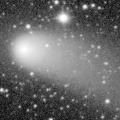
|
It brightened up to 9.6 mag from February to March (Feb. 25, Thomas Lehmann). Now it is 15.6 mag (Nov. 28, A. Diepvens). Fading slowly. In the Northern Hemisphere, it will be getting lower gradually. But it will be getting higher again after March. In the Southern Hemisphere, it is not observable now.
Date(TT) R.A. (2000) Decl. Delta r Elong. m1 Best Time(A, h)
Dec. 7 20 48.48 33 11.9 4.057 3.984 78 15.2 18:18 ( 98, 58)
Dec. 14 20 57.31 32 31.6 4.192 4.054 75 15.4 18:20 ( 99, 54)
|
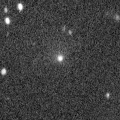
|
Very large comet. It is expected to brighten up to 13 mag in 2031. Now it is 15.3 mag (Nov. 10, Thomas Lehmann). It stays 15 mag for a while. In the Northern Hemisphere, it is not observable now. In the Southern Hemisphere, it stays observable in good condition. In the Northern Hemisphere, it is not observable until 2030.
Date(TT) R.A. (2000) Decl. Delta r Elong. m1 Best Time(A, h)
Dec. 7 3 50.12 -70 48.7 15.713 15.673 85 15.4 22:42 ( 0,-16)
Dec. 14 3 46.33 -70 45.1 15.714 15.649 84 15.4 22:11 ( 0,-16)
|

|
Now it is 16.3 mag (Dec. 3, ATLAS South Africa). It stays 15 mag for a while. In the Southern Hemisphere, it stays observable in good condition.
Date(TT) R.A. (2000) Decl. Delta r Elong. m1 Best Time(A, h)
Dec. 7 8 0.63 -26 20.6 3.716 4.208 113 15.6 2:57 ( 0, 29)
Dec. 14 7 54.53 -25 49.6 3.616 4.185 119 15.5 2:24 ( 0, 29)
|

|
Now it is 15.5 mag (Dec. 1, ATLAS South Africa). Fading slowly. It stays observable in good condition.
Date(TT) R.A. (2000) Decl. Delta r Elong. m1 Best Time(A, h)
Dec. 7 6 35.06 9 45.5 2.632 3.537 152 15.5 1:32 ( 0, 65)
Dec. 14 6 31.57 9 31.9 2.614 3.551 159 15.5 1:01 ( 0, 65)
|
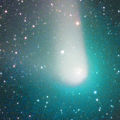
|
It brightened up to 8 mag from 2022 summer to 2023 spring. Now it is 15.5 mag (Dec. 3, ATLAS-MLO, Mauna Loa). It stays 16 mag for a while. It stays observable in good condition.
Date(TT) R.A. (2000) Decl. Delta r Elong. m1 Best Time(A, h)
Dec. 7 6 0.38 20 21.2 6.488 7.442 164 15.6 0:58 ( 0, 75)
Dec. 14 5 55.85 20 36.7 6.520 7.497 172 15.6 0:26 ( 0, 76)
|

|
Now it is 15.4 mag (Dec. 1, W. Pei). It stays 16 mag for a while. In the Northern Hemisphere, it stays observable in good condition. In the Southern Hemisphere, it will be getting lower gradually.
Date(TT) R.A. (2000) Decl. Delta r Elong. m1 Best Time(A, h)
Dec. 7 1 42.11 15 27.1 2.191 2.962 134 15.7 20:36 ( 0, 71)
Dec. 14 1 41.58 14 56.2 2.241 2.937 126 15.7 20:08 ( 0, 70)
|
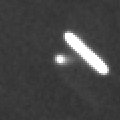
|
It will be observable at 15 mag for a long time in 2025 in the Northern Hemisphere. Now it is 16.3 mag (Dec. 2, Hirohisa Sato). It stays 15 mag for a while. In the Northern Hemisphere, it stays observable in good condition. In the Southern Hemisphere, it will be unobservable in February.
Date(TT) R.A. (2000) Decl. Delta r Elong. m1 Best Time(A, h)
Dec. 7 12 12.42 31 17.0 4.587 4.632 86 15.8 5:24 (273, 68)
Dec. 14 12 16.35 32 49.6 4.462 4.612 92 15.7 5:29 (273, 74)
|

|
It brightened up to 14 mag from summer to autumn. Now it is 16.6 mag (Nov. 30, ATLAS South Africa). Fading gradually. It will be fainter than 18 mag in February. In the Northern Hemisphere, it stays observable in good condition. In the Southern Hemisphere, it will be getting lower gradually.
Date(TT) R.A. (2000) Decl. Delta r Elong. m1 Best Time(A, h)
Dec. 7 1 49.07 7 9.5 1.840 2.611 132 15.9 20:43 ( 0, 62)
Dec. 14 1 49.04 7 33.2 1.946 2.645 125 16.1 20:15 ( 0, 63)
|
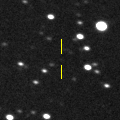
|
Now it is 16.6 mag (Oct. 9, Hidetaka Sato). Brightening slowly. It will be unobservable soon. But it will be observable again in March in the Southern Hemisphere.
Date(TT) R.A. (2000) Decl. Delta r Elong. m1 Best Time(A, h)
Dec. 7 18 47.37 -23 22.7 2.959 2.116 25 16.1 18:18 ( 59, 3)
Dec. 14 19 4.40 -23 23.4 2.974 2.100 22 15.9 18:20 ( 61, 0)
|
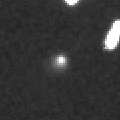
|
Now it is 16.8 mag (Dec. 1, ATLAS Chile). It stays 16 mag for a while. It locates somewhat low in the Northern Hemisphere. But it will become high in autumn. In the Southern Hemisphere, it stays observable in good condition.
Date(TT) R.A. (2000) Decl. Delta r Elong. m1 Best Time(A, h)
Dec. 7 7 5.26 -30 44.8 6.277 6.798 118 16.0 2:02 ( 0, 24)
Dec. 14 7 2.97 -30 46.5 6.223 6.786 121 15.9 1:32 ( 0, 24)
|
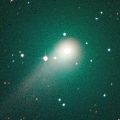
|
It was observed at 9-10 mag for a long time in 2023. Now it is 15.8 mag (Nov. 14, ATLAS Chile). It stays 16 mag for a while. In the Northern Hemisphere, it will never be observable after this. In the Southern Hemisphere, it will be getting lower gradually. But it will be getting higher again after February.
Date(TT) R.A. (2000) Decl. Delta r Elong. m1 Best Time(A, h)
Dec. 7 20 56.57 -63 26.6 6.660 6.175 56 16.0 18:18 ( 16,-13)
Dec. 14 20 59.48 -62 51.1 6.771 6.230 53 16.1 18:20 ( 19,-14)
|

|
First return of a new periodic comet which brightened up to 15 mag in 2010. It is expected to brighten up to 15 mag from winter to spring, and it will be observable in excellent condition in the Northern Hemisphere. Now it is 17.0 mag (Nov. 30, ATLAS South Africa). Brightening slowly. In the Northern Hemisphere, it stays observable in good condition. In the Southern Hemisphere, it will be getting lower gradually.
Date(TT) R.A. (2000) Decl. Delta r Elong. m1 Best Time(A, h)
Dec. 7 2 17.64 9 4.9 1.074 1.935 139 16.2 21:11 ( 0, 64)
Dec. 14 2 14.25 10 24.7 1.083 1.894 132 16.0 20:40 ( 0, 66)
|
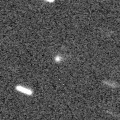
|
Now it is 16.5 mag (Nov. 2, Martin Masek). It stays 16 mag for a while. In the Northern Hemisphere, it stays observable in good condition. In the Southern Hemisphere, it will be getting higher gradually.
Date(TT) R.A. (2000) Decl. Delta r Elong. m1 Best Time(A, h)
Dec. 7 13 23.80 -2 31.1 2.473 2.071 54 16.1 5:24 (303, 34)
Dec. 14 13 36.69 -3 26.8 2.436 2.100 58 16.1 5:29 (308, 37)
|
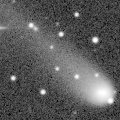
|
Now it is 16.0 mag (Dec. 2, ATLAS South Africa). It stays 17 mag for a while. It stays extremely low in the Northern Hemisphere. In the Southern Hemisphere, it stays observable in good condition.
Date(TT) R.A. (2000) Decl. Delta r Elong. m1 Best Time(A, h)
Dec. 7 7 5.13 -50 34.3 6.103 6.371 101 16.1 2:02 ( 0, 4)
Dec. 14 6 55.44 -51 0.9 6.119 6.416 103 16.1 1:25 ( 0, 4)
|

|
Now it is 16.8 mag (Dec. 3, ATLAS Chile). Fading gradually. It will be fainter than 18 mag in March. It stays observable in good condition.
Date(TT) R.A. (2000) Decl. Delta r Elong. m1 Best Time(A, h)
Dec. 7 23 56.15 6 27.4 0.804 1.439 106 16.1 18:52 ( 0, 62)
Dec. 14 0 18.46 6 42.1 0.850 1.455 104 16.1 18:46 ( 0, 62)
|

|
Now it is 16.8 mag (Nov. 30, ATLAS South Africa). It stays 16 mag for a while. It locates somewhat low in the Northern Hemisphere. In the Southern Hemisphere, it stays observable in good condition.
Date(TT) R.A. (2000) Decl. Delta r Elong. m1 Best Time(A, h)
Dec. 7 12 21.54 -26 59.8 3.941 3.577 61 16.2 5:24 (333, 22)
Dec. 14 12 29.67 -28 5.0 3.857 3.569 65 16.2 5:29 (339, 23)
|

|
Parent asteroid of Geminids meteor shower. Now it is 16.0 mag (Nov. 30, Katsumi Yoshimoto). Brightening gradually. It will be unobservable in March.
Date(TT) R.A. (2000) Decl. Delta r Elong. m1 Best Time(A, h)
Dec. 7 3 2.54 34 34.5 0.907 1.839 152 16.2 21:54 ( 0, 89)
Dec. 14 2 37.97 31 42.2 0.898 1.780 142 16.3 21:03 ( 0, 87)
|

|
Now it is 16.5 mag (June 6, Giuseppe Pappa). It stays 16 mag for a while. It stays extremely low in the Northern Hemisphere. In the Southern Hemisphere, it will be getting higher gradually.
Date(TT) R.A. (2000) Decl. Delta r Elong. m1 Best Time(A, h)
Dec. 7 13 44.18 -42 12.5 5.871 5.209 44 16.5 5:24 (326, 1)
Dec. 14 13 44.20 -42 45.8 5.791 5.205 49 16.5 5:29 (331, 4)
|
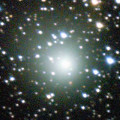
|
It brightened up to 8.3 mag in 2021-2022 winter (Jan. 6, 2022, Toshiyuki Takahashi). Now it is 15.1 mag (Aug. 2, Thomas Lehmann). It stays 17 mag for a while. In the Northern Hemisphere, it will never be observable after this. In the Southern Hemisphere, it stays observable in good condition.
Date(TT) R.A. (2000) Decl. Delta r Elong. m1 Best Time(A, h)
Dec. 7 12 31.39 -53 41.5 9.699 9.212 57 16.5 5:24 (342, -3)
Dec. 14 12 34.04 -54 21.6 9.686 9.256 61 16.5 5:29 (347, -2)
|

|
Now it is 16.7 mag (Dec. 2, ATLAS South Africa). Fading slowly. It will be fainter than 18 mag in March. It stays extremely low in the Northern Hemisphere. In the Southern Hemisphere, it stays observable in good condition.
Date(TT) R.A. (2000) Decl. Delta r Elong. m1 Best Time(A, h)
Dec. 7 9 7.23 -41 26.4 3.647 3.834 93 16.6 4:04 ( 0, 13)
Dec. 14 8 54.58 -42 22.2 3.609 3.882 98 16.7 3:24 ( 0, 13)
|

|
Now it is 16.7 mag (Nov. 28, A. Diepvens). It stays 16 mag for a while. It will be unobservable soon in the Southern Hemisphere, or in February in the Northern Hemisphere. But it will be observable again in March in the Northern Hemisphere, or in April in the Southern Hemisphere.
Date(TT) R.A. (2000) Decl. Delta r Elong. m1 Best Time(A, h)
Dec. 7 22 12.03 20 13.7 5.514 5.573 88 16.7 18:18 ( 52, 68)
Dec. 14 22 10.92 19 30.5 5.588 5.530 81 16.7 18:20 ( 62, 63)
|

|
Now it is 16.9 mag (Nov. 30, ATLAS South Africa). It stays 17 mag for a while. It stays observable in good condition.
Date(TT) R.A. (2000) Decl. Delta r Elong. m1 Best Time(A, h)
Dec. 7 2 43.43 9 30.8 3.044 3.899 145 16.7 21:37 ( 0, 65)
Dec. 14 2 41.45 9 10.0 3.108 3.899 138 16.8 21:08 ( 0, 64)
|
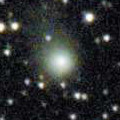
|
It brightened up to 12.1 mag in 2023 spring (May 20, 2023, Jose Guilherme de S. Aguiar). Now it is 16.7 mag (Nov. 12, ATLAS South Africa). It stays 17 mag for a while. It locates somewhat low in the Northern Hemisphere. In the Southern Hemisphere, it stays observable in good condition.
Date(TT) R.A. (2000) Decl. Delta r Elong. m1 Best Time(A, h)
Dec. 7 6 26.06 -41 28.9 5.612 6.058 112 16.8 1:23 ( 0, 13)
Dec. 14 6 19.61 -41 12.7 5.634 6.107 114 16.8 0:49 ( 0, 14)
|
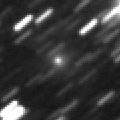
|
Very far object. Now it is 16.8 mag (Nov. 6, ATLAS Chile). It stays 17 mag for a while. In the Northern Hemisphere, it is not observable now. In the Southern Hemisphere, it stays observable in good condition.
Date(TT) R.A. (2000) Decl. Delta r Elong. m1 Best Time(A, h)
Dec. 7 0 56.45 -66 11.3 10.635 10.519 80 16.9 19:50 ( 0,-11)
Dec. 14 0 52.50 -65 25.3 10.696 10.526 77 16.9 19:18 ( 0,-10)
|
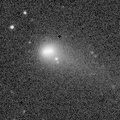
|
It brightened up to 13.5 mag in last winter (Dec. 5, 2023, Chris Wyatt). Now it is 16.6 mag (Nov. 10, J. Nicolas, F. Kugel). It stays 17 mag for a while. In the Northern Hemisphere, it stays observable in good condition. In the Southern Hemisphere, it will be getting higher gradually.
Date(TT) R.A. (2000) Decl. Delta r Elong. m1 Best Time(A, h)
Dec. 7 13 35.17 -3 13.4 3.306 2.810 52 16.9 5:24 (301, 32)
Dec. 14 13 43.77 -4 3.1 3.264 2.847 56 16.9 5:29 (307, 35)
|

|
It brightened up to 12.0 mag in June (June 13, Ken-ichi Kadota). Now it is 18.0 mag (Nov. 28, Ken-ichi Kadota). Fading gradually. It will be fainter than 18 mag in February. In the Northern Hemisphere, it stays observable in good condition. It locates somewhat low in the Southern Hemisphere.
Date(TT) R.A. (2000) Decl. Delta r Elong. m1 Best Time(A, h)
Dec. 7 9 46.19 31 59.3 1.828 2.425 115 17.0 4:43 ( 0, 87)
Dec. 14 9 45.04 32 11.7 1.800 2.475 122 17.1 4:14 ( 0, 87)
|

|
Now it is 17.3 mag (Dec. 2, ATLAS Chile). It stays 17 mag for a while. It stays observable in good condition.
Date(TT) R.A. (2000) Decl. Delta r Elong. m1 Best Time(A, h)
Dec. 7 3 57.12 -16 54.2 3.185 3.972 138 17.1 22:50 ( 0, 38)
Dec. 14 3 53.70 -16 57.1 3.225 3.972 133 17.1 22:19 ( 0, 38)
|

|
First return of a new periodic comet which brightened up to 15 mag in 2010. Now it is 19.1 mag (Nov. 28, Yasukazu Ikari). Fading gradually. It will be fainter than 18 mag in February. In the Northern Hemisphere, it stays observable in good condition. It locates somewhat low in the Southern Hemisphere.
Date(TT) R.A. (2000) Decl. Delta r Elong. m1 Best Time(A, h)
Dec. 7 9 45.21 29 33.0 1.688 2.292 115 17.3 4:42 ( 0, 84)
Dec. 14 9 46.70 29 51.7 1.659 2.335 122 17.3 4:16 ( 0, 85)
|

|
Peculiar asteroid moving along a cometary orbit. Now it is 18.5 mag (Sept. 11, ATLAS-HKO, Haleakala). It stays 17 mag for a while. It stays observable in good condition.
Date(TT) R.A. (2000) Decl. Delta r Elong. m1 Best Time(A, h)
Dec. 7 3 33.21 -15 0.9 1.885 2.694 137 17.3 22:26 ( 0, 40)
Dec. 14 3 28.54 -15 32.6 1.886 2.646 131 17.4 21:54 ( 0, 40)
|

|
It will brighten up to 14 mag in 2025 spring. Now it is 17.3 mag (Dec. 2, ATLAS South Africa). It will brighten rapidly after this. In the Southern Hemisphere, it will be getting lower gradually.
Date(TT) R.A. (2000) Decl. Delta r Elong. m1 Best Time(A, h)
Dec. 7 23 45.98 -25 45.4 1.660 1.944 90 17.4 18:40 ( 0, 29)
Dec. 14 23 52.71 -24 12.5 1.687 1.899 86 17.4 18:20 ( 0, 31)
|
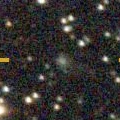
|
Now it is 17.8 mag (Nov. 6, Toshihiko Ikemura, Hirohisa Sato). It stays 18 mag for a while. In the Northern Hemisphere, it stays observable in good condition. It stays extremely low in the Southern Hemisphere.
Date(TT) R.A. (2000) Decl. Delta r Elong. m1 Best Time(A, h)
Dec. 7 7 40.19 41 15.6 6.251 7.042 140 17.4 2:37 (180, 84)
Dec. 14 7 38.17 41 28.4 6.211 7.056 146 17.4 2:08 (180, 84)
|

|
Now it is 17.4 mag (Nov. 30, ATLAS South Africa). Fading gradually. It will be fainter than 18 mag in January. In the Northern Hemisphere, it stays observable in good condition. In the Southern Hemisphere, it will be getting lower gradually.
Date(TT) R.A. (2000) Decl. Delta r Elong. m1 Best Time(A, h)
Dec. 7 0 50.63 -1 49.4 1.431 2.059 115 17.5 19:45 ( 0, 53)
Dec. 14 0 56.86 -0 56.2 1.509 2.070 110 17.6 19:24 ( 0, 54)
|
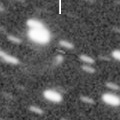
|
Now it is 17.4 mag (Nov. 7, ATLAS-HKO, Haleakala). It stays 18 mag for a while. It locates somewhat low in the Northern Hemisphere. But it will become high in spring. In the Southern Hemisphere, it is not observable now, but it will appear in March.
Date(TT) R.A. (2000) Decl. Delta r Elong. m1 Best Time(A, h)
Dec. 7 19 13.32 16 58.0 5.251 4.709 52 17.5 18:18 ( 89, 32)
Dec. 14 19 15.96 16 9.4 5.342 4.735 47 17.6 18:20 ( 92, 26)
|
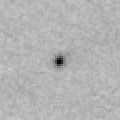
|
Now it is 17.5 mag (Dec. 1, ATLAS South Africa). It stays 18 mag for a while. It stays observable in good condition.
Date(TT) R.A. (2000) Decl. Delta r Elong. m1 Best Time(A, h)
Dec. 7 6 56.25 -6 2.0 3.785 4.573 138 17.8 1:53 ( 0, 49)
Dec. 14 6 52.74 -6 46.5 3.738 4.565 143 17.7 1:22 ( 0, 48)
|
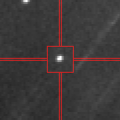
|
Now it is 17.8 mag (Nov. 30, Ken-ichi Kadota). Fading gradually. It will be fainter than 18 mag soon. In the Northern Hemisphere, it stays observable in good condition. It stays extremely low in the Southern Hemisphere.
Date(TT) R.A. (2000) Decl. Delta r Elong. m1 Best Time(A, h)
Dec. 7 4 7.65 41 24.6 2.223 3.161 158 17.7 23:00 (180, 83)
Dec. 14 3 46.27 41 41.1 2.316 3.220 152 17.9 22:11 (180, 83)
|

|
Now it is 18.8 mag (Dec. 1, Yasukazu Ikari). Fading slowly. It will be fainter than 18 mag in January. In the Northern Hemisphere, it stays observable in good condition. It locates somewhat low in the Southern Hemisphere.
Date(TT) R.A. (2000) Decl. Delta r Elong. m1 Best Time(A, h)
Dec. 7 10 13.47 31 41.0 2.105 2.613 110 17.8 5:10 ( 0, 87)
Dec. 14 10 14.70 31 52.7 2.059 2.649 116 17.8 4:44 ( 0, 87)
|

|
Now it is 17.9 mag (May 17, J. L. Virlichie, P. Traverse, H. Roy). It stays 17 mag for a while. It stays extremely low in the Northern Hemisphere. But it will become high in autumn. In the Southern Hemisphere, it stays observable in good condition.
Date(TT) R.A. (2000) Decl. Delta r Elong. m1 Best Time(A, h)
Dec. 7 12 58.80 -47 29.6 6.066 5.527 52 17.8 5:24 (336, 1)
Dec. 14 13 0.30 -47 42.0 5.982 5.514 57 17.8 5:29 (340, 3)
|
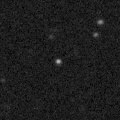
|
Now it is 18.0 mag (Aug. 18, Taras Prystavski). It stays 18 mag for a while. In the Northern Hemisphere, it stays observable in good condition. It stays extremely low in the Southern Hemisphere.
Date(TT) R.A. (2000) Decl. Delta r Elong. m1 Best Time(A, h)
Dec. 7 7 40.98 37 45.0 8.005 8.797 141 17.9 2:38 (180, 87)
Dec. 14 7 35.82 37 43.7 7.945 8.801 148 17.9 2:06 (180, 87)
|
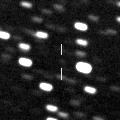
|
Now it is 17.8 mag (Dec. 1, ATLAS South Africa). It stays 18 mag for a while. In the Northern Hemisphere, it will never be observable after this. In the Southern Hemisphere, it stays observable in good condition.
Date(TT) R.A. (2000) Decl. Delta r Elong. m1 Best Time(A, h)
Dec. 7 5 0.13 -59 56.5 4.767 4.991 97 17.9 23:51 ( 0, -5)
Dec. 14 4 42.76 -60 23.1 4.797 4.996 95 17.9 23:06 ( 0, -5)
|
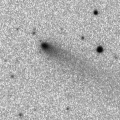
|
Now it is 17.7 mag (Nov. 28, A. Diepvens). Fading slowly. It will be fainter than 18 mag soon. In the Northern Hemisphere, it stays observable in good condition.
Date(TT) R.A. (2000) Decl. Delta r Elong. m1 Best Time(A, h)
Dec. 7 2 58.25 15 40.5 3.688 4.579 151 17.9 21:52 ( 0, 71)
Dec. 14 2 54.96 15 35.0 3.760 4.591 143 18.0 21:21 ( 0, 71)
|

|
Now it is 17.4 mag (Oct. 1, Martin Masek). Fading gradually. It will be fainter than 18 mag soon. In the Northern Hemisphere, it stays observable in good condition. It locates somewhat low in the Southern Hemisphere.
Date(TT) R.A. (2000) Decl. Delta r Elong. m1 Best Time(A, h)
Dec. 7 7 2.77 35 33.6 1.281 2.187 149 17.9 2:00 (180, 89)
Dec. 14 6 58.88 35 55.6 1.273 2.210 156 18.0 1:29 (180, 89)
|
|
![]()
 C/2021 S3 ( PanSTARRS )
C/2021 S3 ( PanSTARRS ) C/2014 UN271 ( Bernardinelli-Bernstein )
C/2014 UN271 ( Bernardinelli-Bernstein ) C/2024 A1 ( ATLAS )
C/2024 A1 ( ATLAS ) 472P/2023 RL75 ( NEAT-LINEAR )
472P/2023 RL75 ( NEAT-LINEAR ) C/2017 K2 ( PanSTARRS )
C/2017 K2 ( PanSTARRS ) 43P/Wolf-Harrington
43P/Wolf-Harrington C/2023 H5 ( Lemmon )
C/2023 H5 ( Lemmon ) 130P/McNaught-Hughes
130P/McNaught-Hughes 48P/Johnson
48P/Johnson C/2022 R6 ( PanSTARRS )
C/2022 R6 ( PanSTARRS ) C/2020 V2 ( ZTF )
C/2020 V2 ( ZTF ) 496P/2024 S3 ( Hill )
496P/2024 S3 ( Hill ) 30P/Reinmuth 1
30P/Reinmuth 1 C/2019 U5 ( PanSTARRS )
C/2019 U5 ( PanSTARRS ) 305P/Skiff
305P/Skiff C/2023 T3 ( Fuls )
C/2023 T3 ( Fuls ) (3200) Phaethon
(3200) Phaethon C/2023 F3 ( ATLAS )
C/2023 F3 ( ATLAS ) C/2019 L3 ( ATLAS )
C/2019 L3 ( ATLAS ) C/2022 L2 ( ATLAS )
C/2022 L2 ( ATLAS ) C/2023 R1 ( PanSTARRS )
C/2023 R1 ( PanSTARRS ) 276P/Vorobjov
276P/Vorobjov C/2020 K1 ( PanSTARRS )
C/2020 K1 ( PanSTARRS ) C/2019 E3 ( ATLAS )
C/2019 E3 ( ATLAS ) 32P/Comas Sola
32P/Comas Sola 154P/Brewington
154P/Brewington 242P/Spahr
242P/Spahr 492P/2024 O3 ( LINEAR )
492P/2024 O3 ( LINEAR ) (308607) 2005 WY3
(308607) 2005 WY3 49P/Arend-Rigaux
49P/Arend-Rigaux C/2021 S4 ( Tsuchinshan )
C/2021 S4 ( Tsuchinshan ) 253P/PanSTARRS
253P/PanSTARRS C/2022 U1 ( Leonard )
C/2022 U1 ( Leonard ) 195P/Hill
195P/Hill C/2024 A2 ( ATLAS )
C/2024 A2 ( ATLAS ) 50P/Arend
50P/Arend C/2024 G2 ( ATLAS )
C/2024 G2 ( ATLAS ) (468861) 2013 LU28
(468861) 2013 LU28 C/2023 U1 ( Fuls )
C/2023 U1 ( Fuls ) 117P/Helin-Roman-Alu 1
117P/Helin-Roman-Alu 1 P/2024 S2 ( Rankin )
P/2024 S2 ( Rankin )![]()
























































